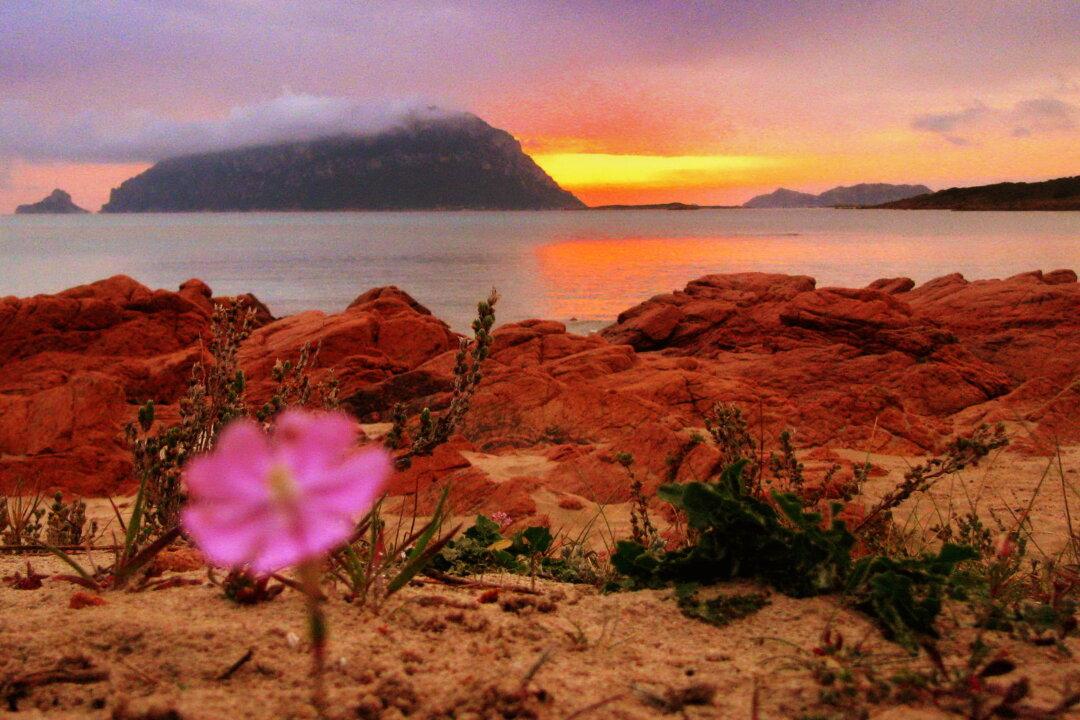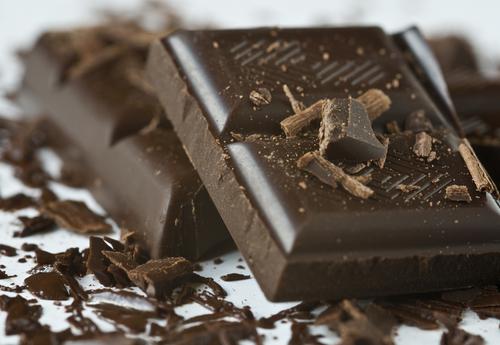The Italian island of Sardinia is a place like no other, radiating a powerful energy and irresistible charm. It is an island of unique beauty and magnetism.
It was this combination that lead the early 20th century English novelist D.H. Lawrence to write in his book Sea and Sardinia: “The spirit of the place is a strange thing. Our mechanical age tries to override it. But it does not succeed. In the end the strange, sinister spirit of the place, so diverse and adverse in differing places, will smash our mechanical oneness into smithereens, and all that we think the real thing will go off with a pop, and we shall be left staring.”
The celebrated author took his wife Frieda on a trip to Sardinia in 1921. They landed on the coastal town of Cagliari, traveling inland to Mandas, Sorgono, before reaching the inland village of Nuoro. He was very impressed by the strong features of Sardinia and its people.
Land for the Senses
Located on the West side of Italy, Sardinia is one of the most geologically ancient bodies of land in Europe, as well as the second largest island in the Mediterranean Sea. it’s surrounded by clear waters and covered in miles of uncontaminated nature.
The coastline features a wide range of landscapes—rocky edges, long pristine sandy beaches, and secluded bays and inlets.
Inland, the natural parks, green pastures, and hills give room to lush forests and mountains with their peculiar fauna. Those who pass by the inshore villages, which have been isolated from one another for centuries, will be under the impression of having traveled back in time.
Sardinia is a place that tickles the senses. It is a land of light, colors, flavors, scents, and music. Spring offers a jubilation of vibrant color. The sea, with its shades of turquoise, joins the deep blue sky; green meadows are spotted with white sheep and dark cows; and olive tree groves extend from red soils. There are also fields covered in endless flowers of blue, green, yellow, pink, red, white, and purple.
The air is scented with distinct smells of lemon and eucalyptus trees, mimosas, maritime pines, and the intense salty smell of the sea.
The summer’s music consists of a rhythm of waves and the breeze, joined by choirs of cicadas, crickets, and native birds signing their melodies.
Sardinia is also known for its range of local, hand-made, traditional delicacies and great quality wines. The mild Mediterranean climate is ideal for genuine and diversified farming. This region also produces some of the best olive oils in Italy and in Europe.
Planning Your Visit
This island provides an ideal setting for a quiet vacation (except for August, when it is overflowing with tourists). For those who seek retreat with a deep connection to nature, it offers secluded corners, natural parks, beaches, mountains, and forests, which can be visited by hiring a car, renting a boat, riding a motorized scooter or bicycle.
From April to the end of September, the East Coast (Costa Smeralda) opens its elegant clubs and hotels and attracts a European jet-set crowd. Porto Cervo, Porto Rotondo, and the surrounding areas are favorites for many Italian and international celebrities, many of whom arrive on private yachts.
However, you don’t need a private yacht to enjoy your stay, as there is a wide range of accommodations suitable for every budget across the island, from five star hotels to affordable and very charming bed & breakfasts, which provide the opportunity for more intimate interaction with the locals.
The languages spoken in Sardinia, (apart from Italian), are Sardo, with its numerous dialects, and Algherese, a variation of Catalan, spoken in Alghero on the West Coast. It’s worth noting that Sardinians are also very generous, kindhearted, and hospitable, though it isn’t unusual for them to take some time to warm to strangers.
Ancient Land
Sardinia has a long history, as well as rich and strong traditions and culture.
The first establishments in Sardinia took place in its Northwestern side and date back to the Mesolithic Era, even though some previous civilizations seem to have lived in the Oliena area, in the Central East part of the island.
From 1500 BC, some villages were built around tower-fortresses called Nuraghi, many of which are still in excellent condition all around the island. The Nuragic civilization spread across the territory had a solid level of technology and they were able to manage a complex society. Nuragic wealth is demonstrated by the artwork and the monumental Nuraghi that are still well preserved, along with a number of sacred wells and religious buildings.
Sardinia was once at the center of important commercial routes and an exporter of raw materials such as copper and lead. Several artifacts have been found in Nuragic sites, which came from as far as Anatolia, Greece, as well as from Italy.
Villages and Festivals
Sardinian modern culture and traditions are the result of the influence of many ancient civilizations, which made contact with this land in different ways. Phoenicians, Carthaginians, Vandals, Roman, Byzantine, Spanish, and French have all contributed to create a complex and extremely rich background.
Cagliari, (in Sardo “Casteddu”, meaning Castle), is the capital city of Sardinia and a fascinating place. The old city lies on top of a hill. Most of its walls are intact, and feature the two early 14th-century white limestone towers—the Torre San Pancrazio and the Torre dell’Elefante. The local white limestone was also used to build the walls of the city and many buildings.
In “Sea and Sardinia,” D. H. Lawrence, described the effect of the warm Mediterranean sunlight on the white limestone city and compared Cagliari to a “white Jerusalem.”
With its particular charm and Spanish-Catalan heritage, the town of Alghero (Catalan name, “L’Alguer”) is located Northwest of Sardinia and showcases its history through ancient buildings, bastions, the Gothic-Catalan churches, the Cathedral (14th–19th centuries) and St. Francis’s Church (14th century) with its magnificent cloisters.
At the edge of the town, those keen on archaeology must visit the Anghelu Ruju Necropolis (3500 B.C.) and the Palmavera Nuraghe complex (10th–7th centuries B.C.). Alghero is also well known for the strong presence of coral in its seabed, which is used to produce jewelry and other precious objects.
The town of Nuoro stands on the high ground on the foot of Monte Ortobene, in the center of the island and in the mountainous area of Barbagia; its surroundings were the cornerstone of the Nuragic civilization. More than 30 Nuragic sites can be visited there, such as the village discovered in the countryside of Tanca Manna, just outside Nuoro.
Olbia, a beautiful little town on the East Coast, is very ancient too. Probably founded by the Punics; it was always an important port and it still is.
Also, worth visiting are Sassari (20 minutes by car from Alghero, on the West Coast) and Oristano (Central West Coast), with their ancient archeological sites and ruins and the little villages around the island.
All of these places have strong traditions, their own costumes, and heritage. La Sartiglia of Oristano, la Cavalcata Sarda, Candelieri of Sassari, and la Setmana Santa de l’Alguer are festivals and celebrations, which originate back hundreds of years, and remain very popular today.
Inspiring Place
Several iconic movies were filmed in Sardinia, such as “The Spy Who Loved Me” directed by Lewis Gilbert; “Red Desert” by Michelangelo Antonioni; “Swept Away” by Lina Wertmüller; and its recent remake directed by Guy Ritchie, whose protagonist was Madonna – just to name a few.
Grazia Deledda, the first Italian woman to receive the Nobel Prize, was born in Nuoro. Her mother tongue was Logudorese, not standard Italian. Due to the historical isolation of the Sardinian villages, she never saw the sea in her childhood years but took inspiration from the nature around her, as well as from Sardinian legends, folklore, and native customs that preserved cultural traits and themes from ancient times.
Sardinia gave birth to and inspired many artists, writers, poets, and filmmakers. They were all enchanted by its beauty, contrasts, strong character, and by the heart of its inhabitants. There truly is an intoxicating magnetism that can only be understood by experiencing for one’s self.
Further information at www.sardegnaturismo.it





